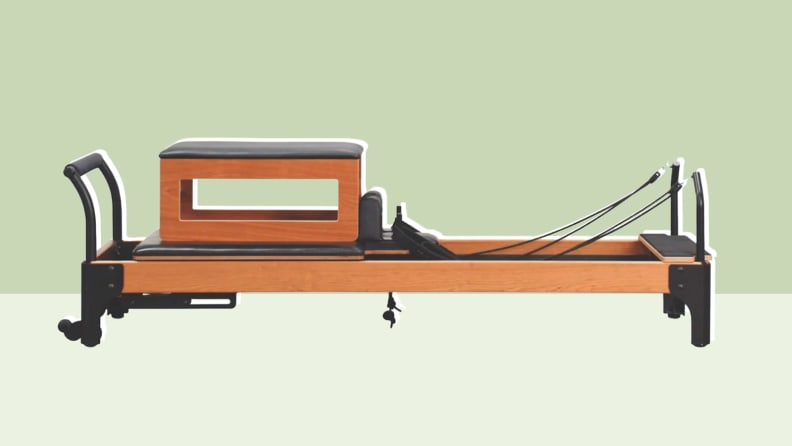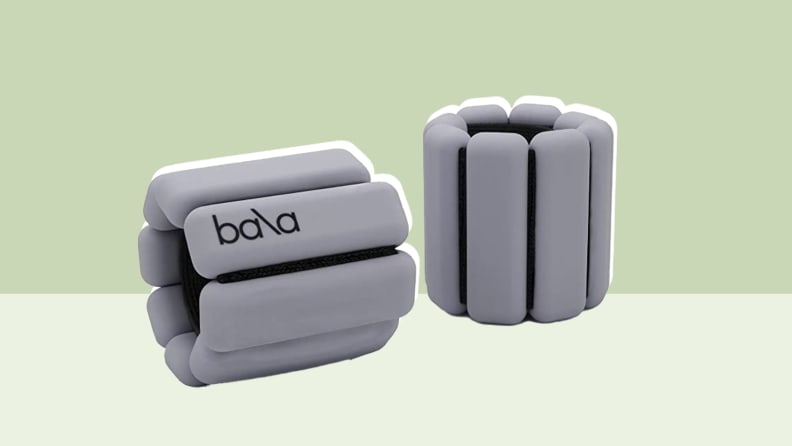Products are chosen independently by our editors. Purchases made through our links may earn us a commission.
While you may have taken a Pilates class at your local studio or gym, you don’t need an in-person teacher to reap the benefits of Pilates. With the right gear and the right instruction, it’s easy to start and commit to doing Pilates at home. But before you roll out a mat, check out these pro tips.
What is Pilates?
Created in the 1920s by Joseph Pilates, the workout bearing his name is a form of exercise that involves the repetition of slow, controlled movements that focus on engaging the core muscles. Though Pilates was designed to help dancers recover from injury, it soon became a popular modality for helping athletes and laypeople alike gain core strength and flexibility.
Some common Pilates exercises include leg circles, scissor kicks, and an isometric crunch known as hundreds. All involve activating your core for stability while recruiting other muscles in your body to perform tiny movements that build strength and mobility. The goal: to enable you to move your entire body with greater grace and control.
How does mat Pilates differ from reformer Pilates?
Pilates routines can be performed on a mat or on a device called a reformer—a bed-shaped apparatus with a sliding platform in the middle—that incorporates springs to add more resistance and variety to your workout. Reformers are very expensive and typically require hands-on, in-person instruction, so these workouts tend to be ones you would go to a studio for. (However, an at-home reformer may be an option.)
Mat Pilates often utilizes foundational moves that are true to Pilates’ classical origins. Some Pilates instructors stick to the classical sequencing while others use those moves as a base, expanding upon it in their own way.
What you need to do Pilates at home

A reformer machine is used to offer resistance and variety to your workout.
If you’re unsure which style is for you, mat Pilates is easier and less expensive to start at home, as all you really need is a Pilates mat—usually a half-inch thick rectangle of foam squishier than a yoga mat—and a virtual instructor leading the way.
For an extra challenge, consider adding some common pieces of equipment for additional resistance.
1. Resistance bands
Mini bands allow you to crank up the difficulty during exercises like clam shells or leg lifts, and they take up almost no room in your home gym, perfect for those short on space.
The Fit Simplify bands have a 4.5-star rating and more than 114,000 reviews on Amazon. Reviewers say this set of five makes a great addition to any workout and can be used for almost any exercise thanks to the various resistance levels.
2. Ankle weights
Ankle weights are an easy way to make your workout more challenging, and the Bala Bangles do it in style.
These sleek wearable weights can be worn around your wrists or ankles, making them a versatile option for both upper and lower body exercises. They’re comfortable to wear and don’t slip during workouts, and they come in a variety of trendy colors so you’re sure to find a pair that suits your style.
3. Pilates ball
A pilates ball is a scaled-down version of a regular exercise ball that can be used during exercises like toe touches or teasers to further engage your core and improve your stability.
This option from ProBody has 4.5 stars and nearly 10,000 reviews on Amazon. Reviewers say the ball feels durable and isn’t slippery, a major plus during sweaty workouts.
4. Pilates ring
While bands add resistance by creating tension when you pull on them, a Pilates ring adds resistance when you push on the sides. It can be used to build strength in your upper body, lower body, and core, while also improving stability and balance.
The ProBody Pilates ring is a popular option that has 4.5 stars and more than 7,600 reviews on Amazon. Reviewers say it adds an excellent challenge to their workouts and doesn’t lose its spring over time.
5. Sliders
Sliders can help you mimic the movement of a reformer and engage your core even more during your workout. By placing the sliders beneath your hands or feet, you can vary your typical crunches and recruit your abs as you move your arms and legs out in front of you or to the side.
The Synergee core slider pack is a solid option, with 4.5 stars and more than 16,000 reviews on Amazon. Reviewers say these sliders work well on various surfaces, don’t crack or lose their slipperiness over time, and of course, leave their abs feeling sore for days.
6. Workout app
Once you have the gear, you’ll want to find great instructors to lead you through your home Pilates workouts. Our favorite yoga app, Alo Moves, has an ample selection of Pilates workouts with A-plus instructors that will motivate and guide you during class.
7. A reformer
If you have the space in your home gym—and in your budget—you may consider an at-home Pilates reformer. The Flexia smart reformer is a connected apparatus that allows you to stream workouts on a smartphone, TV, or computer and follow along at home.
While it certainly isn’t cheap—$3,495 for the machine plus a $39 monthly membership fee to be able to stream classes—it’s a high quality machine that could be a good option for someone who loves reformer classes but doesn’t want to trek back and forth to a Pilates studio for them.
What are the benefits of Pilates?

With the help of Bala Bangles 1-pound ankle weights you can intensify your workout.
Pilates practices offer many benefits for both your cardiovascular and muscular health. While you might be moving slow, Pilates can get your heart beating faster, which can boost your aerobic fitness. The workouts’ emphasis on core exercises can improve your posture, and the movements also engage your arms, legs, and back for a full-body resistance workout.
Though it’s challenging, Pilates is considered a low-impact workout, great for anyone whose joints aren’t happy after running, jumping, or excessive lunging. It’s also a stellar functional movement, meaning it recruits multiple muscle groups and joint movements to get your body moving to the best of its ability, which can improve your stability, balance, and mobility.
“There are many levels to the practice [of Pilates] and it has multiple modifications and variations so the moves are adaptable to all types of bodies,” says Vanessa Johnson, master trainer for Club Pilates. “Because it’s low-impact and won’t stress the joints, it’s a workout that you can do for life.”
Can anyone do Pilates?
Thanks to its low-impact nature, Pilates is a great option for almost anyone who might be interested. As a primary exercise modality, Pilates can help build strength, flexibility, and mobility, and counteract a sedentary lifestyle. For runners, lifters, and yogis, Pilates can serve as cross-training, a key remedy for muscle imbalances from doing the same workouts over and over.
If you have an injury, you may need to take some time away from the studio or your at-home practice. But when you’re ready to return, it’s easy to modify your Pilates session to fit your body’s limitations or workout goals.
The product experts at Reviewed have all your shopping needs covered. Follow Reviewed on Facebook, Twitter, Instagram, TikTok, or Flipboard for the latest deals, product reviews, and more.
Prices were accurate at the time this article was published but may change over time.


